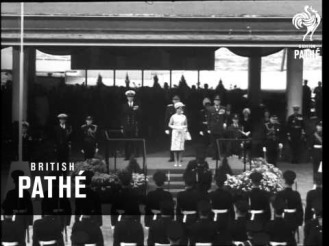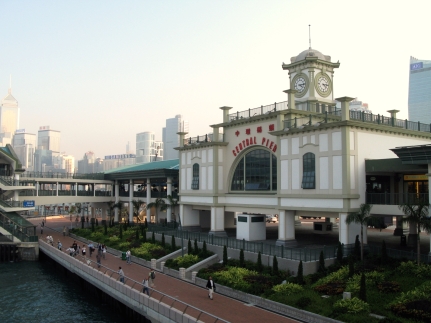As the title says, I know that we’re all worried about the future but there’s nothing much we can do about it right now. Instead let’s all take a break and read about a trip I took during summer to several historic sites in Hong Kong. Hey, anything’s better than the end of the world. Also it’s Armistice day soon, so a bit of history to remember the dead never hurts (not us anyway).
Introductory note:
I had originally intended to write and post this several months ago but I was lazy and procrastinated. It outlines a trip that I made just a few days before leaving HK again, this time to New Orleans where I currently am studying for a year. In some ridiculous mix of patriotism and boredom I visited several historic sites that took me far too long to get to. Although I’ve still written/finished this as though recent, note that my actual trip was in early August. Also because of how ridiculously long it was, I’m splitting it into two halves. The first half covers the two smaller areas: Causeway Bay and Aberdeen whilst the second half covers Stanley which was far more interesting.
———————————–
Stupidly long trip: Causeway bay – Aberdeen – Stanley
It was a stupidly convoluted trip that would take me round the whole of Hong Kong Island. I had toyed with the idea for several weeks but I was busy and also lazy. There were three places that I wanted to go to: Stanley I had wanted to visit again I went last summer and bought an incensed fan. It broke but it still smelled wonderful so I wanted another. Aberdeen, I wanted to visit for its historic significance in the naming of Hong Kong. Causeway Bay, where I basically spent all summer, has the famous noon-day gun which I never had the chance to see despite being nearby. With only a few days left and finally no more rehearsals at the Academy of Performing Arts, I decided to just do everything in a single day.
Part 1: Causeway Bay: The legend of the BOOM day gun.
Causeway Bay was my first stop. I had spent the majority of my holiday nearby at the Academy of Performing Arts on a production of ‘Seven Brides for Seven Brothers’. Last Christmas I had read about the famous noon-day gun, still fired everyday (though without bullets anymore) in ceremonial fashion. I had planned to visit it earlier but my only free afternoon I spent at the US embassy, a trip which took far too long. Causeway Bay was also a good starting point because from there I could visit both Stanley and Aberdeen on a single bus ride.
The story of the gun goes back to the 1860s when a powerful Hong Kong company, the Jardine-Matheson cooperation, used to fire a cannon in salute of ships when they left port. One day a British naval officer arrived in Hong Kong and unaware of the tradition saw it as an insult as cannon salutes were reserved only for commanders. In punishment the officer commanded the company to fire the gun every day for forever and ever. The gun has actually been fired every day except for during Japanese occupation in World War II and even gained notoriety through Nöel Coward’s song ‘Mad Dogs and Englishmen’. This isn’t the same gun, if I’m right the original was lost in the war. The gun that was mounted after that was removed for being too loud and is now at Sai Wan Ho Marine Police HQ. At some point a third gun was involved (they traded guns many times) and that gun is now mounted at the Former Marine HQ, aka: 1881 Heritage Hotel.

I showed up at the gun around 11:40 with a crowd of 100% tourists except for myself, a couple of Americans and a few mainlanders. It is not easy to get to the gun, you have to walk through the carpark of the World Trade Center (WTC) next to the Excelsior Hotel and then up an old stairwell. I believe you can also walk into the area from Gloucester Road but that’s no fun. It’s interesting to note that both buildings used to be owned by the Jardines as did the land they stand on, however in 2006 the Jardines sold the WTC to Sun Hung Kai Properties.
The gun itself sits on a platform in a small square that also houses several disused cannons, a bell and a few plaques. The square is locked at all times except for half an hour after firing, presumably so we don’t accidentally start a civil war with it (it is a very functional, very dangerous machine).

The Jardine gunmen came out of their office soon after I arrived, unlocked the gate, walked through the gate and locked the gate back up. We watched in excitement as they walked under a pagoda to cover from the rain and chatted with each other for 10 minutes. It was a very exciting 10 minutes. Approaching noon at around 11:50, one of the gunmen loaded the gun preparing it for firing. Then at 11:59 the ceremony started, in complete honesty I wasn’t sure if there was going to be a ceremony but a bit of pomp and circumstance never hurt anybody. The gunman began a short march to the bell and rang it signaling noon, turning he marched up the platform, saluted and pulled the chain.

BOOM
Obviously we all knew it was going to go boom, it’s a bloody gun but it was far louder than expected.
The gunman told me that they don’t actually fire bullets (I thought they loaded the gun) but only put blanks in. In antiquity the gun would have been used for salutes and time checks but those days are long gone. Everyone knows when lunch is. I for one know every minute for the 1.5 hours leading up to lunch. The ceremony is now a living tradition with very little purpose and for being that I love it.
And now as a direct advertisement for my instagram:
https://www.instagram.com/p/BI6_0cggNZa/?taken-by=cyril_does_a_thing&hl=en
Part 2 – Aberdeen: Named after Scotland, as empty as Scotland

After such an exciting boom I went for lunch and decided to visit Aberdeen. I put no pictures from Aberdeen on Instagram because it was 6x more boring than I expected. Aberdeen is one of the southern ports on the Island, in Cantonese it is known as 香港仔 (heung gong tsai) or ‘Little Hong Kong’. Hong Kong, as many will already know, means fragrant harbour, the name came about because incense wood was felled and shipped from Aberdeen to Imperial China making it a great smelling port. When Westerners first landed on the Island they asked for the name of the place and got told Hong Kong. The whole island was since then called Hong Kong Island and from 1841, British Hong Kong. As colonial territory expanded the name was carried over for the whole British owned area of South China, first southern Kowloon in 1860 and then in 1898….everything else. The whole territory become known simply as British Hong Kong. The name Aberdeen was named after George Hamilton-Gordon, 4th Earl of Aberdeen, or simply Lord Aberdeen who was British Prime Minster during the annexation of Hong Kong Island. An alternative theory offered on one of the signs on the promenade said that Hong Kong Tsai harbour looked similar to Aberdeen Harbour and was named for such although I personally fail to see the resemblance.

With such historic significance I expected to have a nice time there. Turns out Aberdeen became industrial a long time ago and is now just an office/residential district much like Causeway Bay and Wanchai. The geography of the area is interesting though considering that everything is on a very steep slope and that much of the immediate area can only be reached by crossing water (locals get a cheaper ride, tourists get ripped off). The Hong Kong government is trying very hard to improve tourism to Aberdeen which is currently only known for the Jumbo floating restaurant – famously expensive. I have been told that there’s a similar floating thing in Sha Tin that is much more accessibly – soon there will be two MTR stations in the area which will make visiting much easier.

I did end up finding a hidden gem on the hillside though – Old Aberdeen Police Station built in 1891 to manage the surrounding areas, it is a medium sized red brick structure literally hidden amongst the trees. It is currently used as ‘The Warehouse’ a member’s only clubhouse which offers classes and opportunities to teenagers, although from how abandoned it looks, much better as a zombie uprising hideout. The membership prices are low in order to accommodate those less fortunate. I tried very hard to find a way into the building since all the gates were locked, I finally walked up to the carpark and found that…there was no one there. One room had lights on, everything else was dead. The reception was dead, the café was dead, it was all dead. Having said that, I was technically trespassing so I didn’t linger too long but I hope that it was simply not being used due to nearby refurbishment.



Nearby on the main road there also still exists an old Hong Kong electric substation. A humble colonial structure still performing its original purpose. Quite rare nowadays.

Aaaaaaaaaaaaand
that was the whole of Aberdeen. Hours spent walking till my shirts were see through only to find an abandoned police station. Ok, that’s not entirely true, there was also….a nice looking school…and a tourist sign post that told me to take a bus somewhere else for more historic sites. It might not have seemed like it when Britain first named the area Aberdeen but considering its current interests, it sure lives up to its name.


And soon when I get around to it, I’ll post the rest of my trip which culminates at a graveyard. Fitting as a late Armistice memorial and as a foreshadow for democracy!



![IMG-20160331-WA0013[1]](https://composingphilosophy.wordpress.com/wp-content/uploads/2016/04/img-20160331-wa00131.jpg?w=197&h=350)









